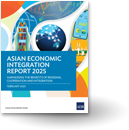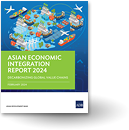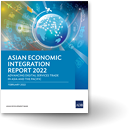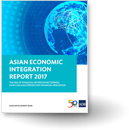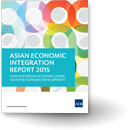
-
- Themes
- Database
- AEIR Data Catalogue
- Free Trade Agreements
- Macroeconomic database:
- Regional Cooperation and Integration database:
- Daily Market Watch
- Resources
- Events
- Economies
- Central Asia
- East Asia
- Oceania
- South Asia
- Southeast Asia
- The Pacific
- COVID-19
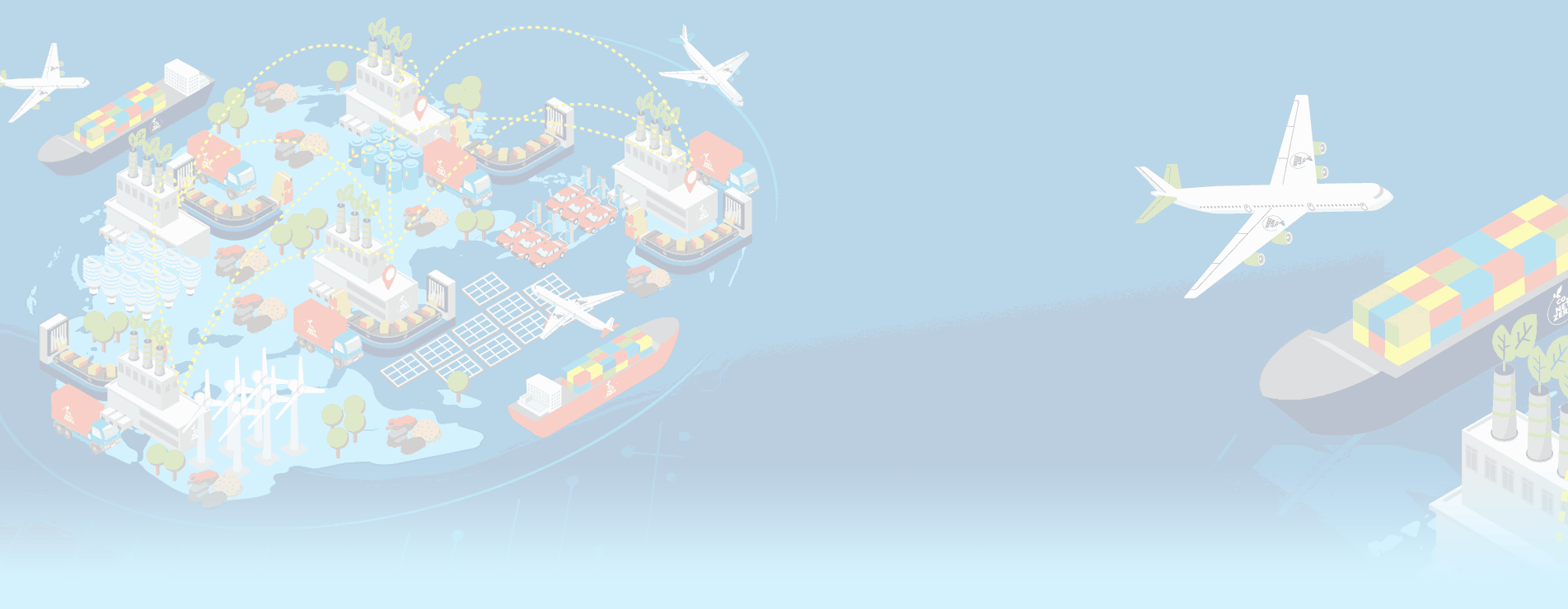
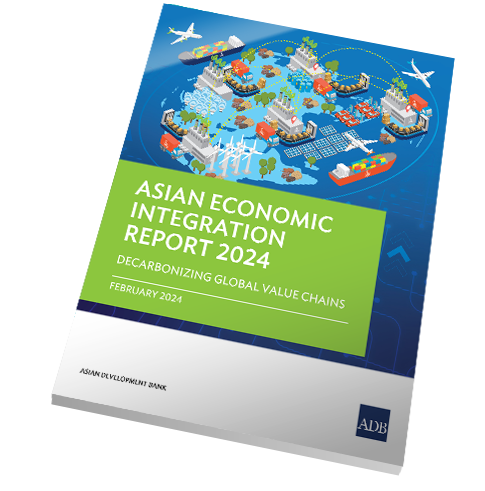
Asian Economic Integration Report 2024
Decarbonizing Global Value Chains
The Asian Economic Integration Report (AEIR) 2024 examines the impact of economic factors on the movement of goods, services, and people across borders. It analyzes how regional economies in Asia and the Pacific respond to economic and geopolitical challenges by deepening economic inter-relationships.
This year’s AEIR theme chapter focuses on the pressing issue of decarbonizing global value chains (GVCs). The chapter delves into the carbon emissions generated at various stages of GVCs and emphasizes the need for policymakers to address this environmental challenge while maximizing the economic advantages of globalization and global production networks. It evaluates the impact of initiatives like the EU’s Carbon Border Adjustment Mechanism for Asian subregions, suggesting strategies such as carbon pricing, emission accounting, enhanced trade cooperation, technology upgrades, and international collaboration for technology transfer to mitigate carbon emissions.
Amid global uncertainties, Asia’s 2023 trade growth stagnated, necessitating regional efforts to bolster resilience in the face of a subdued 2024 global economic outlook.
Post-pandemic, Asia’s global value chain activity rebounded strongly with increased regional integration driving these dynamics.
As Asia progressively embraces modern trade agreements, initiatives towards lifting restrictions, diversifying trade, and deepening regional cooperation are pivotal to foster resilience in essential sectors such as food trade.
FDI in strategic sectors offers opportunities to Asia and the Pacific, with higher investments and broader destinations on the horizon.
Efficiency-seeking FDI remains critical to Asia’s industrial development, while active policies for market-seeking FDI can also bring benefits to the region.
Capital flows to Asia and the Pacific reversed in 2022, and in part recovered in 2023, but remain below the pre-pandemic average.
Rising US dollar funding costs could negatively affect capital flows to Asia and the Pacific, further amplified by the region’s US dollar dependence.
Migrant outflows from Asia and the Pacific are recovering while major host economies broaden access to skilled migrant workers to reduce labor shortages.
Remittance inflows to Asia and the Pacific maintained resilience, bolstered by digitalization—inflows grew by 4.4% in 2023 to $371.5 billion.
Asia and the Pacific continues to recover from its pre-pandemic tourism arrivals level, with some subregions reaching at least 90% of their 2019 levels.
Between 1995 and 2018, carbon dioxide emissions from global value chains grew faster than those from other sources, which concerns developing Asian economies as critical players within global value chains.
EU’s Carbon Border Adjustment Mechanism would have a limited effect on global carbon emissions and will likely reduce global and Asia’s exports to the EU and downstream production within EU.
Extending carbon pricing and carbon border adjustment mechanisms to other regions may reduce global emissions significantly.
Increasing investments in green infrastructure, promoting technological advancement, and prioritizing sustainable investment are needed to decarbonize global value chains.
Contents:
Download chapter
Cover and highlights
Download chapterThe Crucial Role of Regional Cooperation
- Shared Risks
- Regional Integration in Asia Is Progressing Steadily, Though Variations Remain
- Regional Cooperation Initiatives in Asia
- Southeast Asia
- The Pacific
- South Asia
- Central and West Asia, East Asia, and the Caucasus
- Common Regional Cooperation Challenges
- Policy Recommendations
Download chapterTrade and Global Value Chains
- Introduction
- Recent Growth Trends in Asia’s Trade
- Slow Growth in Asia’s Trade for 2023 Amid Lingering Pressures
- Trade Structure Changes
- Asia’s Global Value Chain Growth Reinforces Downstream Role
- Developments in the Structure of Asia’s Global Value Chain Participation
- Trade Policy Developments
- Building Resilience in Asia’s Food Sector
- Resilient Food Supply Chains Are Crucial to Ensure a Steady Stock of Food
- Diversity in Trading Partners Is Key to Food Trade Resilience
- Restrictive Trade Policies Are Roadblocks to Resilience
Download chapterCross-Border Investment
- Overview
- Investment Policy
- A Changing Landscape: From Efficiency to Market-Seeking
- Policy Recommendations
Download chapterFinancial Integration
- Opportunities and Risks of Financial Integration
- Drivers of Capital Flow Volatility in Asia
- Risks of Entrenched US Dollar Dependence
Download chapterMovement of People
- Migration
- Remittances
- International Tourism
- Policy Recommendations
Download chapterTHEME CHAPTER: Decarbonizing Global Value Chains
- Introduction
- Climate Change and Global Value Chains
- The Contribution of Global Value Chains to Carbon Dioxide Emissions
- The Production and Use of Embodied Carbon Dioxide Emissions in Global Value Chains
- Sectoral Contributions to the Production and Use of Embodied Carbon Dioxide Emissions in Global Value Chains
- The Relationship between GVC Activity and Carbon Dioxide Emissions
- Global Value Chains and Policies to Decarbonize Production
- Embedded Emissions Accounting Frameworks
- Trade Policy, Preferential Trade Agreements, and the Decarbonization of Global Value Chains
- Beyond Trade Policy—Additional Ways to Decarbonize Global Value Chains
Download chapterStatistical Appendix
- Regional Groupings
- Table Descriptions
AEIR Archives:
ASIA REGIONAL INTEGRATION CENTER© 2015 Asian Development Bank. All rights reserved. Reproduction in whole or in part without permission is prohibited.About usThe Asia Regional Integration Center (ARIC) is an ongoing technical assistance project of the Economic Research and Development Impact Department (ERDI). Following the 1997/98 Asian financial crisis and the contagion evident around the region, ADB was asked to use its knowledge-based expertise to help monitor the recovery and report objectively on potential vulnerabilities and policy solutions. With the ASEAN+3 process just starting, ADB provided technical assistance beginning in 1999—to create the Asia Recovery Information Center, the precursor to ARIC.Contact usPlease help us improve the ARIC website by sending us your comments. These may be on content, (e.g., articles posted on or for which links are provided in the ARIC website), website structure (e.g., do you find ARIC's sections useful?), ease of navigation, or even page design and layout.
Send all your comments to: aric_info[at]adb.orgQuick links
Other ADB sites:
ADB Regional Cooperation and Integration | Asian Bonds Online | Asian Development Bank Institute | RTA Exchange
